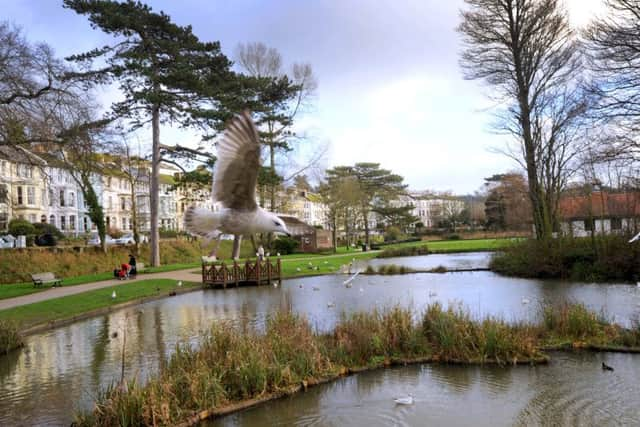Using science to clean water naturally


Some of you may have noticed the work that’s currently going on in Alexandra Park, digging new channels between the ponds and putting in gravel ‘shelves’ with new planting. This isn’t just decorative - it’s the final stage of work to reduce the number of coliforms (bacteria that live in animal guts) in the stream, and improve bathing water quality where the stream runs into the sea.
They’re turning one of the ponds into a giant aeration and filtration system, similar to what’s used in a fish tank. The filter beds are planted with reeds and flowering water plants such as giant kingcup and water mint, along the edges of the ponds. The streams between the ponds help to improve flow through the ponds and avoid still, oxygen-starved areas.
Advertisement
Hide AdAdvertisement
Hide AdThe story began a couple of years ago, when water quality testing results showed that Hastings Beach was likely to fail the new EU bathing water quality standards. Jeremy Birch, the council leader, convened a group including the MP, Southern Water, the Environment Agency and council officers to put things right before the new standards came into effect. It was identified early on that the problem arose from the outfall pipe on the beach, which carries the water from Alexandra Park stream.


Pollution in the stream was coming from mis-plumbed toilet connections and leached animal waste, resulting in contamination from coliform bacteria, with a little solid waste washed in from the mis-plumbed toilets, dogs, seagulls, foxes, badgers and so on. For the most part, this settles on the bottom of the ponds, and without decent aeration, will form anaerobic silts where coliforms can survive. In themselves, coliforms (predominantly E. coli) aren’t harmful, although some can give rise to gut infections if ingested (because they end up in the wrong bit of your gut), can cause skin or eye infections and in a very few cases can be more serious pathogens. Water quality is judged primarily by the number of these coliforms in the water, so we needed to get rid of them.
A lot of work then followed, tracing mis-plumbed toilets that discharged into the stream and getting property owners to put them right, dredging ponds, installing the ‘floating islands’ in the park ponds, and now this final part of the scheme, which creates oxygenated flows of water throughout the ponds, including across the silts on the bottom. This encourages single-celled animals such as Paramecium (which need oxygen, as do all animals and plants) to multiply and eat the coliforms, but also to minimise the conditions in which coliforms can survive. Getting more oxygen into the water also encourages other scavenging micro-animals which gobble up dead bacteria and other rubbish, and stop it sinking to the bottom to form silts.
Because of all this work, the water at Hastings Beach now passes the new standards with a ‘good’ rating, but we want to get it up to ‘excellent’ (as St Leonards Beach is) and improve the water quality of the stream as much as possible.
As a water quality engineering project, it’s ground-breaking, and could win us awards. So once again, Hastings leads the way in innovation, and does a bit of microbiology as well.